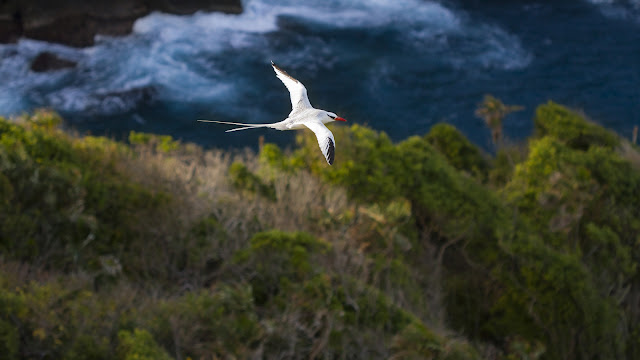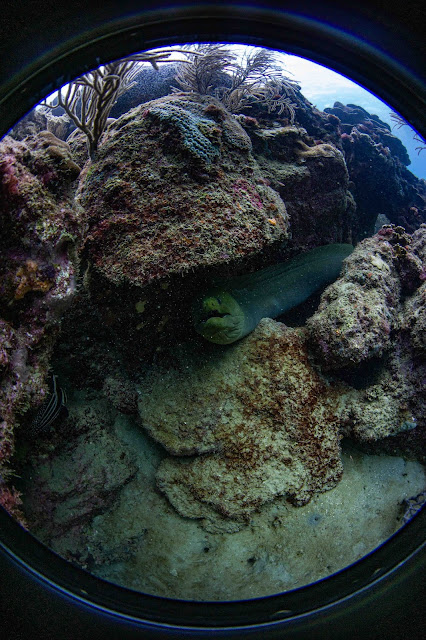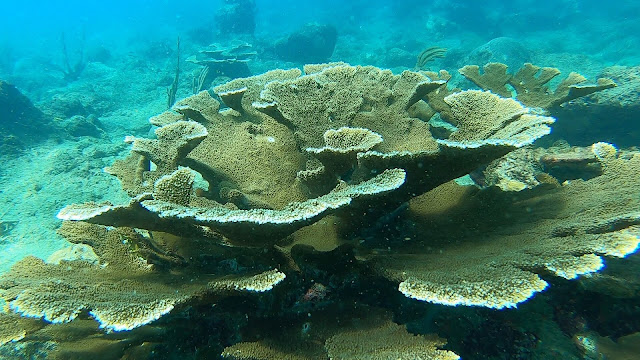Precious Buccoo Reef
Anjani Ganase, Trinbagonian marine
biologist, begins a weekly column on the value of coral reefs to our islands
and people, and especially Tobago. This, the first of her series, was published in the Tobago Newsday on Thursday, July 14, 2016
 | ||
| Anjani Ganase is completing her PhD in Coral Reef surveys |
The
Buccoo reef is considered a national and natural icon by Trinbagonians. Yet few
of us have had the luxury of exploring beyond the upper edges of the reef,
barely a couple metres below the sea surface. To fully understand the true
beauty and importance of the Buccoo reef, you need to dive deeper in order to
discover and understand how the reef functions.
The
Buccoo reef, like many other reefs around the world, is a metropolis for marine
life, where corals – stationary animals that grow by building a limestone
skeleton – create homes for animals, such as fish, lobster and other
invertebrates, sponges, anemones, and plants that live and grow on and among
the coral skeleton. Worldwide, coral reefs, including the Buccoo reef, make up less
than one percent of the world’s ocean but house 25% of all marine organisms; which
is even higher than the diversity found in a tropical rainforest such as the
Amazon. This means that in one glance at this reef, you are likely to see more
living creatures in this one setting than ever before without even realising it.
This is just one reason that coral reefs are considered so valuable to humans. They
are our source of food and income, but also places of beauty, reverence and joy.
The
Buccoo reef plays a vital role in sustaining the Tobago’s local fish population
but it doesn’t do this on its own. The Buccoo reef connects the mangroves to the
open ocean. By doing this ii connects habitats that are crucial to the life
cycle of fish populations. Mangroves, such as the one present at No Man’s Land,
act as nurseries to many fish and shark populations. As the fish grow they move
on to the reefs, where they live as adults, or as adolescents before finally
swimming out into the open ocean. In turn, the presence of fish on the reef, in
particular herbivorous fish, such as parrot fish, help clear space for corals
to grow by grazing away the algae. This connectivity with mangrove ecosystems
is vital for the well-
being of the fish communities and the coral reef, and
ultimately for us.
Finally,
how are we connected to the reef? Water connects all ecosystems including our
own. What we put in our waterways, down our drains, rivers and streams will
always end up in the mangroves and coral reefs and affect the fish and corals.
An unhealthy waterway will lead to an unhealthy coral reef and fish population,
which will impact our fisheries, tourism and even our personal enjoyment of the
ocean.
Therefore,
next time you look upon the myriad of blues that we know as the Buccoo reef, think
about the marine city that lives below, how it helps us and how we must protect
it in return.
Over
the next weeks, we will explore different aspects of marine life, and the
importance to people like us who live on islands. Over the past five years, I
have dived on reefs in Curacao, Australia, Hawaii and in the Caribbean.
Tobago’s reefs are most special to me because this is where I learned to dive;
this is where my love for our Ocean world developed and grew.
If you want to
have a look at an on-going project that I am involved in, visit this website http://catlinseaviewsurvey.com/



